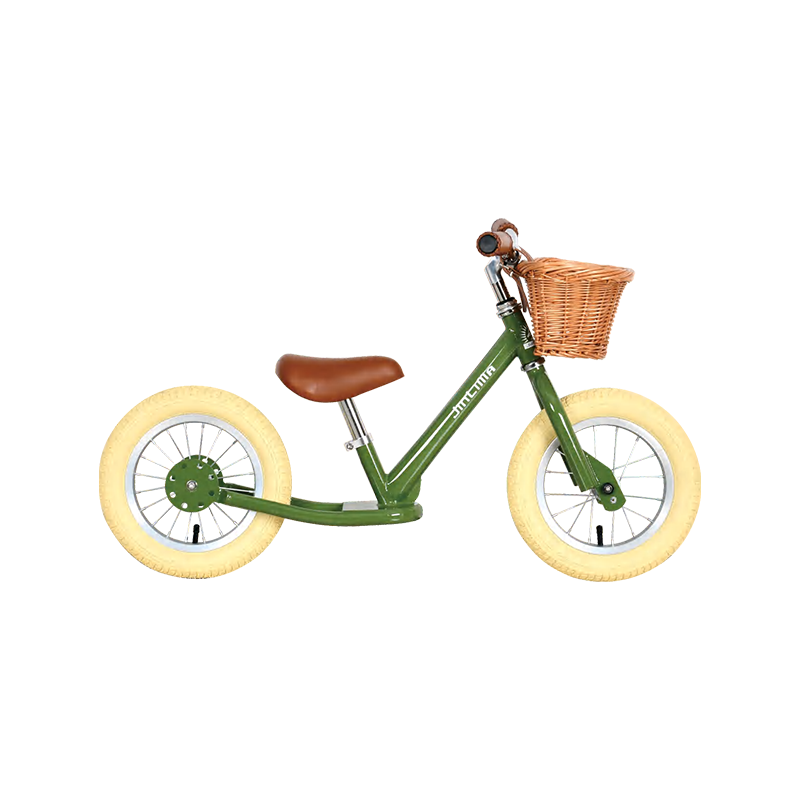The toddler bike market has evolved far beyond miniature versions of adult bicycles. Today, these early mobility tools are engineered to support cognitive, physical, and emotional development while prioritizing safety and adaptability. From balance bikes to pedal-assisted trikes, modern toddler bikes integrate principles of child psychology, biomechanics, and advanced materials science. This article examines the sophisticated design philosophies, developmental benefits, and safety innovations that define high-quality toddler bikes, offering insights for parents, educators, and industry professionals.
The Role of Toddler Bikes in Early Childhood Development
Research in pediatric kinesiology reveals that toddler bikes serve as critical tools for neuromotor development. Unlike passive toys, bikes requiring balance and propulsion activate multiple developmental domains:
Vestibular System Development: Balancing on two wheels stimulates inner ear structures, enhancing spatial awareness and coordination.
Gross Motor Skills: The act of pushing, gliding, or pedaling strengthens leg muscles and improves bilateral coordination.
Cognitive Growth: Navigating obstacles and judging speeds foster executive functioning skills like risk assessment and decision-making.
A 2023 study published in Pediatric Exercise Science found that children using balance bikes from age 18 months demonstrated significantly better postural control and earlier transition to pedal bikes compared to traditional training-wheel users.
Engineering Innovations in Toddler Bike Design
Modern toddler bikes are products of meticulous engineering, balancing lightweight construction with durability:
Frame Materials
Aerospace-Grade Aluminum: Offers strength-to-weight ratios ideal for small riders (1.5–2.5 kg frames).
Composite Thermoplastics: Used in footrests and handlebar grips for shock absorption and ergonomic comfort.
Sustainable Alternatives: Bamboo-fiber-reinforced frames are emerging in eco-conscious brands like woom and Early Rider.
Adjustability Systems
Tool-Free Seatposts: Allow 10–15 cm height adjustments to accommodate rapid growth spurts.
Modular Pedal Kits: Convertible balance-to-pedal bike systems (e.g., Strider 14x) extend usability from 18 months to 5 years.
Safety-Centric Geometry
Low Center of Gravity: Wheelbases widened by 20–30% compared to 1990s designs improve stability.
Caster Angle Optimization: Fork angles between 72°–75° enhance straight-line tracking while maintaining maneuverability.
Puncture-Proof Tires: Foam-filled or rubber composite tires eliminate flat risks and reduce maintenance.

Safety Standards and Certification Complexity
Toddler bikes must comply with stringent international regulations, including:
EN 71 (EU): Covers mechanical safety, chemical content, and flammability.
CPSC (USA): Mandates brake performance, handlebar stability, and pinch-point protection.
AS/NZS 8124 (Australia/NZ): Requires additional chain guard and reflectivity testing.
Leading manufacturers now exceed these standards with proprietary innovations:
Magnetic Braking Systems: Provides gradual stopping power without abrupt jolts (e.g., Puky LR M).
Collapsible Steering Limiters: Prevent over-rotation accidents while allowing progressive skill development.
Phthalate-Free Grips: Meet EU REACH regulations for endocrine-disrupting chemical avoidance.
The Psychology of Color and Form in Toddler Engagement
Industrial designers collaborate with child development experts to optimize bike appeal:
Color Psychology: Warm hues (red/orange) dominate premium models to stimulate engagement, while pastel options cater to sensory-sensitive children.
Biomorphic Shapes: Curved frames and animal-inspired decals (Frog Tadpole Plus) leverage toddlers’ natural affinity for organic forms.
Auditory Feedback: Clicking freewheel mechanisms provide rewarding sensory input, reinforcing continued use.
Market Trends and Future Directions
Smart Bike Integration
GPS trackers and Bluetooth-enabled skill progress monitoring (e.g., Guardian Bike’s app-linked models).
Gyroscopic assist systems for special needs riders under development at MIT’s Mobility Lab.
Circular Economy Models
Subscription-based bike rotation services (like Bike Club) reduce environmental impact from rapid outgrowing.
Advanced Material Recycling
Brands like REI Co-op now offer take-back programs to recycle aluminum frames into new bikes.
Inclusive Design
Adaptive trikes with harness systems and adjustable pedal resistance for children with mobility challenges.


 0
0











 Linhang industry park, Zhuji,
Linhang industry park, Zhuji,  +86-18858280688
+86-18858280688
